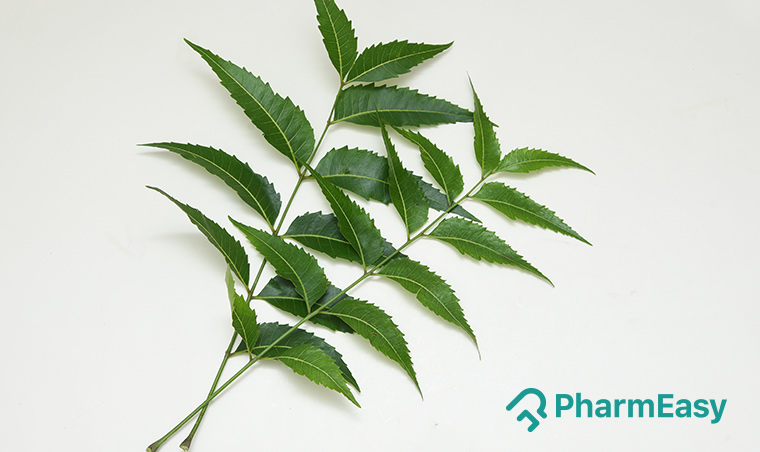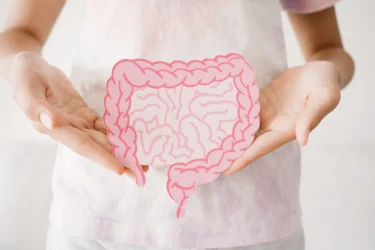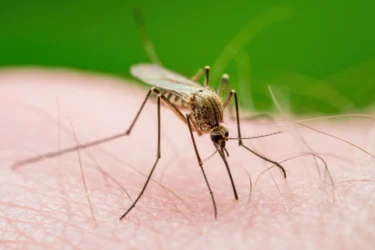Neem: Uses, Benefits, Side Effects, and More!
By Dr Ashok Pal +2 more

Get,

to manage your symptom
Get your,


4 Cr+ families
benefitted

OTP sent to 9988776655



You’ve successfully subscribed to receive
doctor-approved tips on
Whatsapp

Get ready to feel your best.

Hi There,
Download the PharmEasy App now!!


Register to Avail the Offer
Send OTPBy continuing, you agree with our Privacy Policy and Terms and Conditions

Hi There,
Sign up on PharmEasy now!!
Trusted by 4 crore+ families

OTP sent to 9988776655



You have unlocked 25% off on medicines




Code: NU25
By Dr Ashok Pal +2 more
Table of Contents
Azadirachta indica, commonly known as neem in India, is also called ‘Margosa’ or ‘Indian Lilac’. It is the most versatile, diverse (different varieties of species) tree in the tropical region (hot regions), that might have medicinal potential. Neem has a lot of beneficial non-wood products like flowers, leaves, fruits, bark, gum, oil, seeds, and neem cake (residue left over after oil is pressed from neem seeds). It is thus considered the most useful tree in comparison to all other tree species1.
In Sanskrit neem is called ‘arista’ which means ‘perfect, complete and imperishable1. ‘Nimba’ is the Sanskrit name of neem and is derived from the term ‘nimbati swasthyamdadati’ which means ‘to give good health’. Even the Persians have named neem as ‘Azad- Darakth- E- Hind’ which implies ‘Free tree of India’. It shows remarkable potential in the fields of environment protection, pest management, and medicine. Neem might be a natural source of pesticides, insecticides, and agrochemicals apart from having potential health uses1.

Leaf meals from some tropical legumes have been explored due to the need to look for alternative sources of food for humans and feed for livestock. Neem leaf meal was analysed in a study that found that it has 18.10% crude protein and relatively high crude fibre of about 15-56%. Though the gross energy content was high at 4.16 kcal/g, the metabolizable energy is low2.
Non-ruminant animals might also benefit from leaf meal from neem plants as a source of protein, vitamins, minerals, and carotenoids2.
Neem, due to its potential properties, has been used in Ayurvedic medicine for more than 4000 years. Neem products have several properties and might have applications in various fields making neem a green treasure.
Did you know ?

Studies have shown that a chemical found in neem, called nimbidin, might possess anti-inflammatory and anti-arthritic activity. Nimbidin might help inhibit the inflammatory action of macrophages and neutrophils. Neem might aid in lowering inflammation and might help reduce associated swelling and pain. It might also be helpful for rheumatoid arthritis, a disease characterised by inflammation and pain in the joints and muscles due to auto-immune reactions3. However, more research is required. Kindly consult a doctor.


Flavonoids and other chemicals found in neem might play a role against the worsening of cancer. Several studies4 suggest that high flavonoids might help stop the growth of cancer. Neem and its extracts have a potential action against a wide range of cancer cells in humans that include cancers of the skin, breast, lung, oral, stomach, liver, colon, and prostate3. However, much more extensive research is required to prove its potential use. Moreover, cancer is a serious condition and you should consult a qualified doctor for its diagnosis and treatment.
Neem has a compound, furanolactone, which is well recognised for its ability to reduce the generation of inflammation and to anaesthetize pain. From my experience, neem may alleviate pain associated with cancer and diabetes5.
Dr. Rajeev Singh, BAMS

Studies have recently started to focus on the hypoglycaemic (lowering blood sugar) effect of neem. The exact mechanism is not clear, however, the effects are visible3. Please consult a doctor, as conditions like diabetes are to be diagnosed and treated by a doctor.

Neem might have some effect on liver protection, which in turn might aid the purification of blood. Neem leaf might help reduce liver damage occurring due to chemicals by stabilising serum marker enzyme levels and by increasing antioxidant levels, like those present in natural carotenoids, vitamin E and C. These antioxidants might help to neutralize free radicals and may inhibit damage3. However, more research is required. Kindly consult a doctor.
Let me tell you a secret! While highlighting the numerous health advantages of neem components and extracts, neem may lead to few problems too! I have read an article that says over-consumption of neem or its extracts might have ill health effects, notably on the liver and kidneys. From my perspective, the consumption of neem might be done only after the physician’s consent5.
Dr. Siddharth Gupta, B.A.M.S, M.D (Ayu)

The most important potential use of neem may be due to its immune-stimulating property. It might help both the cell-mediated and lymphocytic immune systems, including ”Killer T” cells. These cells might help to kill viruses, other microbes, etc. by releasing toxic chemicals into them3. However, more research is required to be sure.

The antioxidants present in neem might show brain-protective properties. In stroke patients, neem might help against brain damage. It might help the brain by raising the levels of ascorbic acid (Vitamin C) and might help in a process called lipid peroxidation, which might be helpful3. However, more research is required to ascertain such claims.

In rural India, it is still used to clean teeth. The potential antimicrobial qualities of neem might aid gingivitis and plaque reduction. Antiseptic properties might be present in neem twigs which might help with maintaining oral hygiene3. However, more studies are required to prove such potential uses, for any concern related to oral care, please consult a dentist.
For ages, neem twigs proved beneficial for oral hygiene as a tooth cleaner, a pain cure, and mouth deodorant. From my perspective, due to its antibacterial, anti-candidal, anti-cariogenic, anti-gingivitis, and anti-plaque action, neem may aid in dental problems. In place of sodium hypochlorite, its antibacterial and antioxidant qualities make it a potential root canal irrigant used during root canal treatment6.
Dr. Smita Barode, B.A.M.S, M.S.

Studies have shown that neem bark might reduce the secretion of acid in the stomach by 77% and might regulate stomach secretion volume by 63%. It might reduce stomach enzyme pepsin activity by 50% and may reduce damage to stomach tissue further owing to its potential anti-inflammatory properties3. However, more research is required to back up such claims. Please ensure to consult a doctor. Do not self-medicate.

Blood clots, excessive cholesterol levels, high blood pressure and irregular heartbeat (arrhythmic heart action) are all major causes of heart attacks. Neem leaf extracts might have the potential to help lower blood pressure, may reduce clotting and strain on the circulatory system, may help with irregular heartbeats and might lower levels of bad cholesterol3,4. However, more studies are required to prove the potential uses of neem for the heart. Heart-related problems should be addressed immediately by a qualified doctor, please do not try to self-medicate using herbs.

Malaria is a common disease of the tropical climate. Neem leaf extract might be helpful against the malaria virus indirectly as it may have an effect on parasites that carry the virus. Dried neem leaves are burnt and used as a mosquito repellent3. However, more concrete evidence is required to validate its effectiveness. Malaria should be diagnosed and treated by a doctor, so kindly consult a doctor.

Neem might also be helpful for skin problems like vitiligo, an autoimmune disorder that causes the skin to lose colour and turn white. However, more research is required to prove the potential use of neem for vitiligo. Kindly consult a doctor for its proper diagnosis and treatment3.
Though there are studies that show the benefits of herbs in various conditions, these are insufficient and there is a need for further studies to establish the true extent of the benefits of herbs like neem on human health.
Neem might be of potential use in several forms like neem oil, cake, twigs for oral care, leaf extract, extract from flowers and many other products derived from the neem tree1.
You must consult your Ayurvedic physician for advice on the form and dosage as per your health condition.
You must consult a qualified doctor before taking any herbal supplements. Do not discontinue or replace an ongoing treatment of modern medicine with an ayurvedic/herbal preparation without consulting a qualified doctor.
Every herb may react differently in individuals. More research is required to state the side effects of neem. However, we must consult the doctor before using the neem tree or its parts. Kindly do not self-medicate, alter, replace or discontinue any treatment by yourself.
General precautions must be followed if we wish to consume neem. Moreover, it must be prescribed by an Ayurvedic doctor who will understand your conditions and will be able to guide you in the best possible way about dosage and form.
Pregnant women must use neem products with caution, and they should consult their doctor before consuming it in any form.
Before using neem for children, the elderly and breastfeeding moms, please consult your Ayurvedic physician.
There is a lack of studies regarding the interactions of neem with other drugs. Therefore, there is a need for more research on this subject. However, you should consult a doctor before using neem and its parts. You should make sure to disclose all the current medication being used.
Neem might be helpful against head lice. It is a common practice to apply neem all over the hair to kill head lice and their eggs as it might be helpful3. However, more research is required. Please consult a doctor before using it.
Pregnant women must consult their doctor before using neem tree or its parts in any form. The effects of neem on pregnant women are not known fully and require further research.
Research has demonstrated the potential use of neem root or leaf extract as an insect repellent against black flies. Neem oil cream to the skin might appear to secure against certain kinds of mosquitos4. However, more research is required.
Neem might have potential use for the livestock in many ways. It might become popular as an animal feed substitute. Every part of the neem tree such as bark, fruits, leaves, gum and seeds has potential use for animal problems. Neem leaves may act as an antiviral agent against several viral infections in livestock. A hot infusion of leaves might help with bruises, swollen glands and sprains1.
In Telangana, Andhra Pradesh and Karnataka, neem blossoms are being used on the occasion of Ugadi day in ‘Ugadi Pachhadi’ (soup-like pickle) to mark Telugu and Kannada new year. Demonstrates the interdependence of joy and sorrow and to be able to take both harsh and sweet things throughout life4.
Disclaimer: The information provided here is for educational/awareness purposes only and is not intended to be a substitute for medical treatment by a healthcare professional and should not be relied upon to diagnose or treat any medical condition. The reader should consult a registered medical practitioner to determine the appropriateness of the information and before consuming any medication. PharmEasy does not provide any guarantee or warranty (express or implied) regarding the accuracy, adequacy, completeness, legality, reliability or usefulness of the information; and disclaims any liability arising thereof.
Links and product recommendations in the information provided here are advertisements of third-party products available on the website. PharmEasy does not make any representation on the accuracy or suitability of such products/services. Advertisements do not influence the editorial decisions or content. The information in this blog is subject to change without notice. The authors and administrators reserve the right to modify, add, or remove content without notification. It is your responsibility to review this disclaimer regularly for any changes.
Comments

Leave your comment...
You may also like
Comments